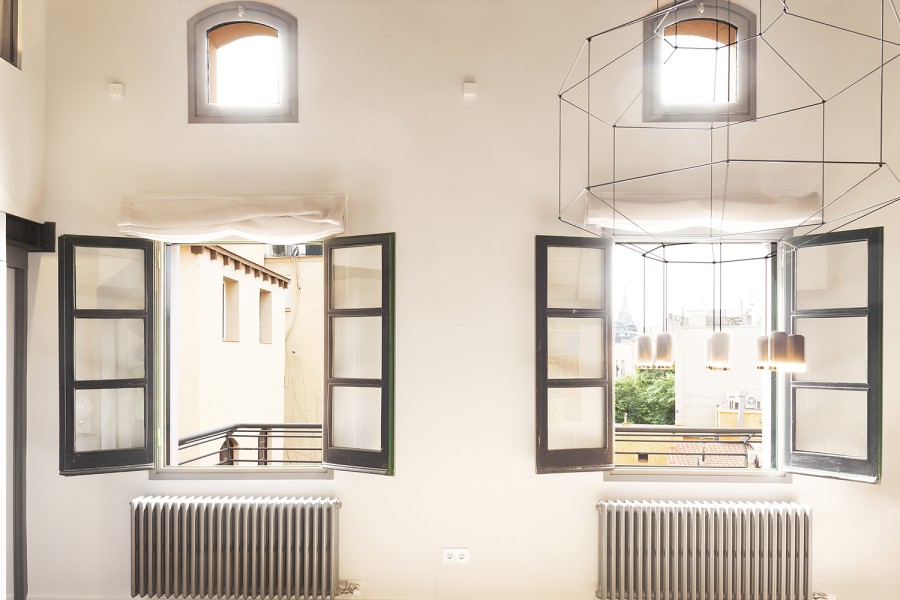“Architecture is the wise and magnificent play of volumes under light”. An aphorism of the Swiss architect, with which many have endeavored to synthesize more than half a century of work.
And we already know that architecture is much more complex. A project is always intertwined with social, economic and aesthetic aspects that cannot reduce architecture to a simple concept, but it is certain that light plays a determining role in the “atmosphere of spaces”. Exteriors and interiors.
This is what makes the lighting project so important in the design of spaces. Baltasar Patiño already said that “light can build or destroy a space”, or hasn’t it ever happened to you to enter a restaurant where you feel that the atmosphere envelops you, shelters you, and after a while sitting, you detect that the space has no special material or morphology? It is due to nothing more and nothing less than the lighting design.
—————
Designing with natural light.
It goes without saying that under the umbrella of passive architecture, we are talking about making the most of natural resources. Therefore, in our projects, the main objective will always be to minimize the use of artificial lighting.
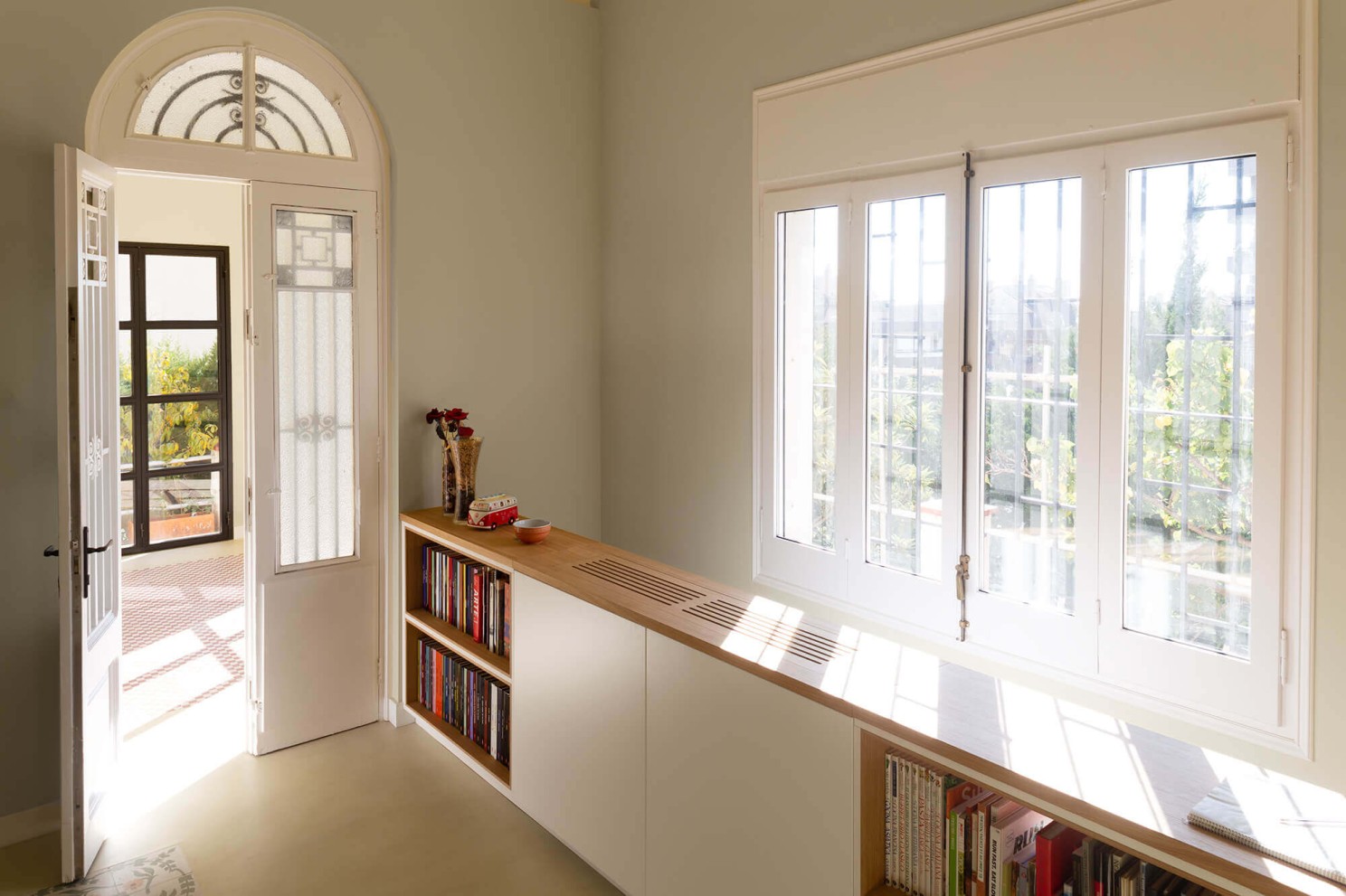
Villa Luisa project.
However, we must keep in mind that when “designing” from natural daylight, it can sometimes be difficult to control the high solar radiation, so we must be very aware of what tools we have to sift it, in order to avoid direct radiation.
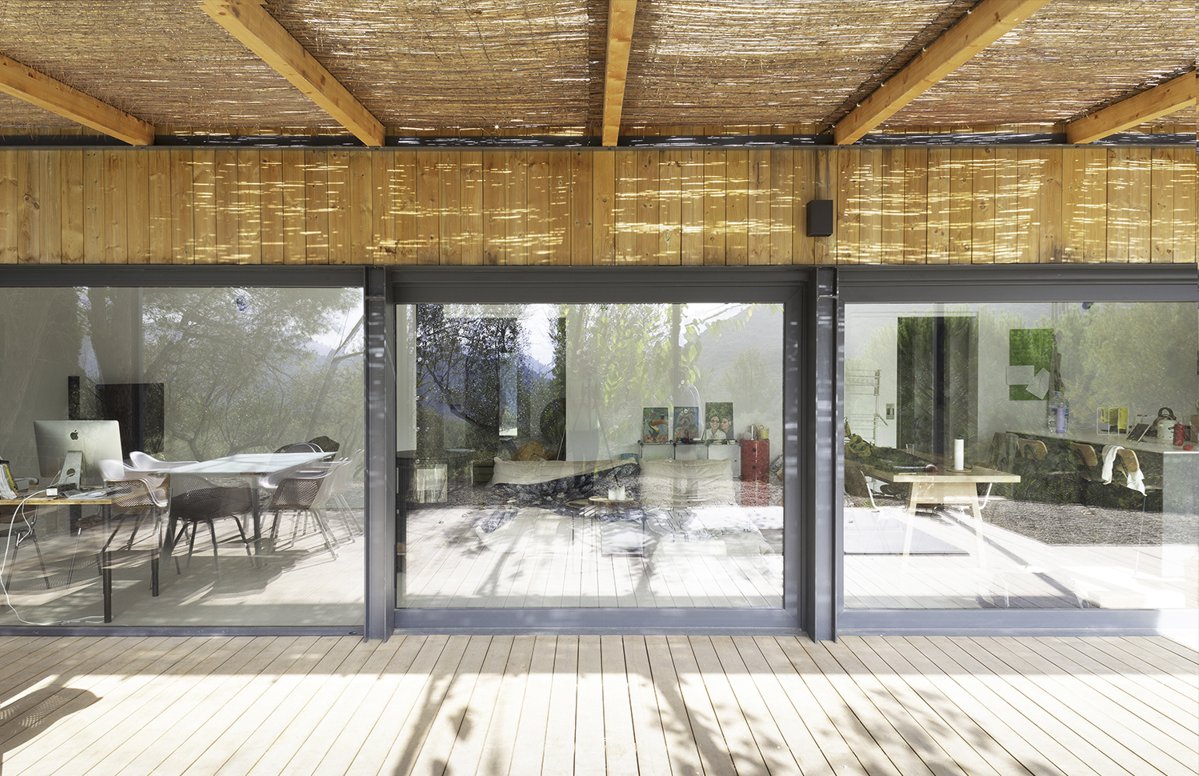
Alforja project.
Nor can we forget the incidence of orientation. Northern light is usually the most suitable for workspaces, since it does not generate as many chiaroscuro or shadows, being much more constant throughout the day and without direct radiation.
But no matter how much we minimize the use of artificial light, we cannot live without it. There are spaces that do not have good natural light, and we also have the nights: black and dark. So it is essential to know how to manage the design of artificial light, to provide the rooms with the comfort we ask for.
—————
Designing with artificial light.
Although we do not know what time it is, nor do we have temporal references about day and night, our body innately marks a rhythm of approximately 24 hours. And it does so thanks to circadian cycles.
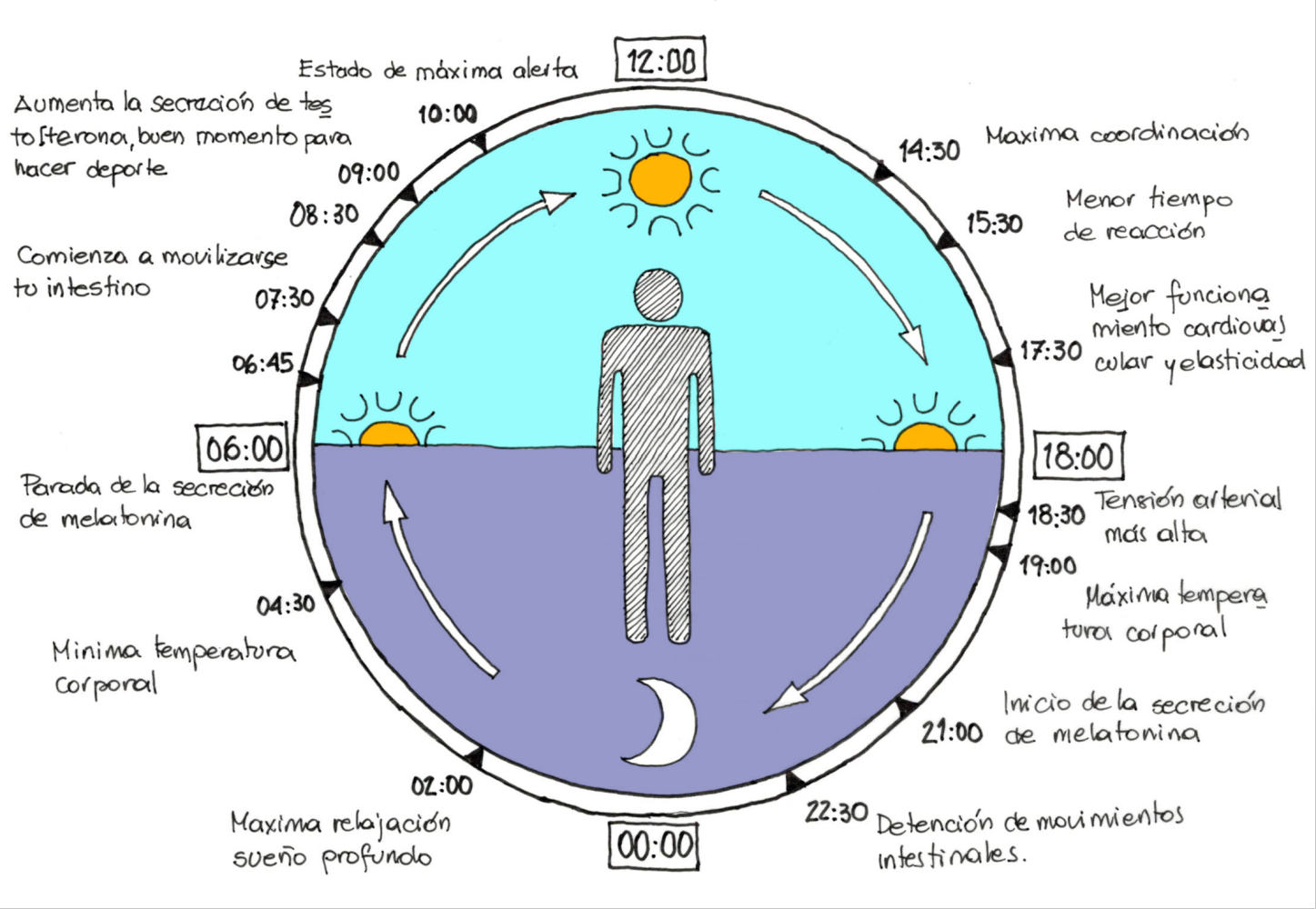
Circadian rhythms sketch.
In other words, we have something like an internal clock, which synchronizes our metabolism, intestinal motility, hormonal rhythms (melatonin, cortisol, etc.) where the brain is the orchestra conductor.
And one of the external stimuli that most influences the synchronization of the central clock (hypothalamus) is light.
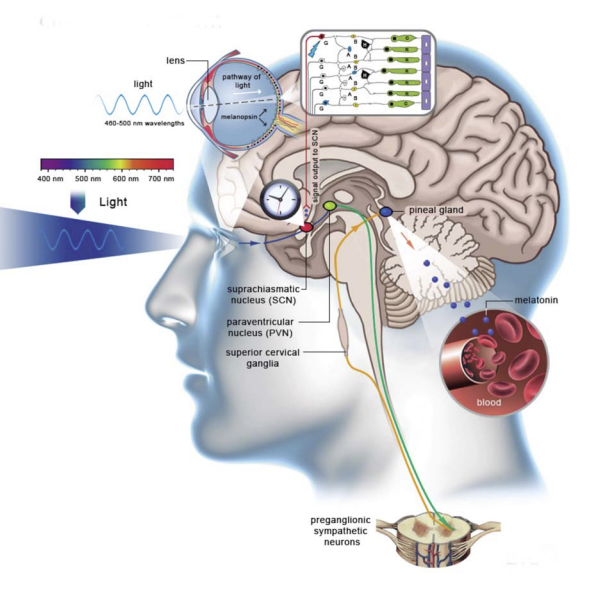
Nervous system influenced by light.
We could talk at length about biological processes, but for the lighting project of a space, the most important thing is to know that to the extent that we design aligned with natural light, we will help to avoid imbalances in the body, by the desynchronization between our biology and environmental cycles of 24 hours.
So, to get to the heart of the matter, we have synthesized in a few points, some of the most important criteria when designing with lighting.
1. Adapt light spectra according to the time of day (as long as the activity permits).
In addition to their light output and dimming capacity, luminaires are characterized by their apparent color, i.e. color temperature, which is classified as warm, medium and cool. Warm colors are usually more inviting. However, care must be taken to ensure that they are not so warm that they reduce color rendering.
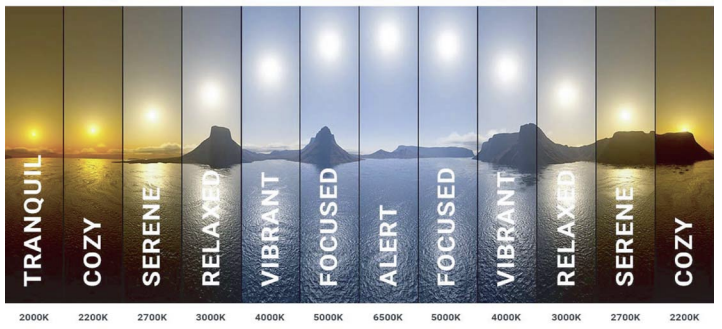
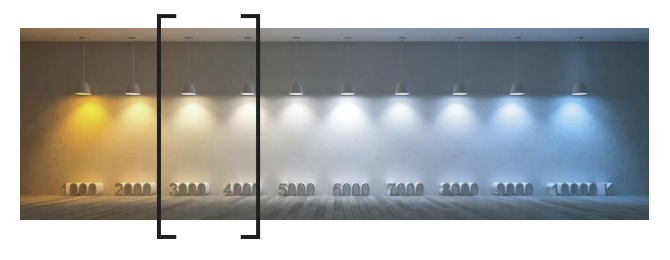
For rooms where we want to invite relaxation, we have to use warm lighting (between 2,700ºK and 3,000ºK temperature), so as not to activate our metabolism.
In those rooms where we wake up and sleep it is important to have the option of turning on a single very warm light (1,000ºK / 1,500ºK), which invites us to relax and does not alter our system if we wake up in the middle of the night.
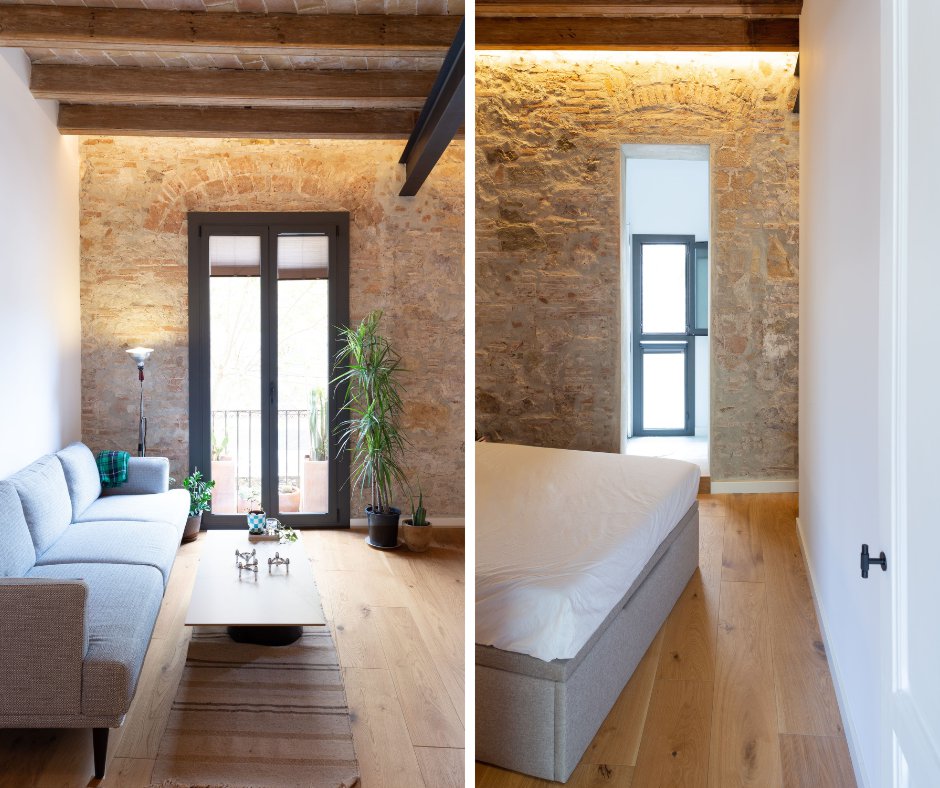
2. Control exposure to cold light.
Although cold light increases productivity, its permanent use causes damage to ocular tissues and inhibits melatonin production, causing sleep, stress and fatigue, so it is important to restrict its use in work spaces where concentration is required. Cold light is used in spaces of high performance and precision: operating rooms, offices, but we must control its use in domestic spaces.
3. Generate contrast, zoning according to uses.
Homogeneous lighting in a large, open space generates visual fatigue and does not allow the eyes to rest. So it is highly recommended to design different types of lighting for different uses.
Thus, for example, in a work space (such as a kitchen, an office, a workshop) it will be important to achieve a differentiation of zones from the light:
a) Higher intensity light for the work area (worktop or desk),
b) Lower intensity light for passage areas,
c) Medium light for storage areas.
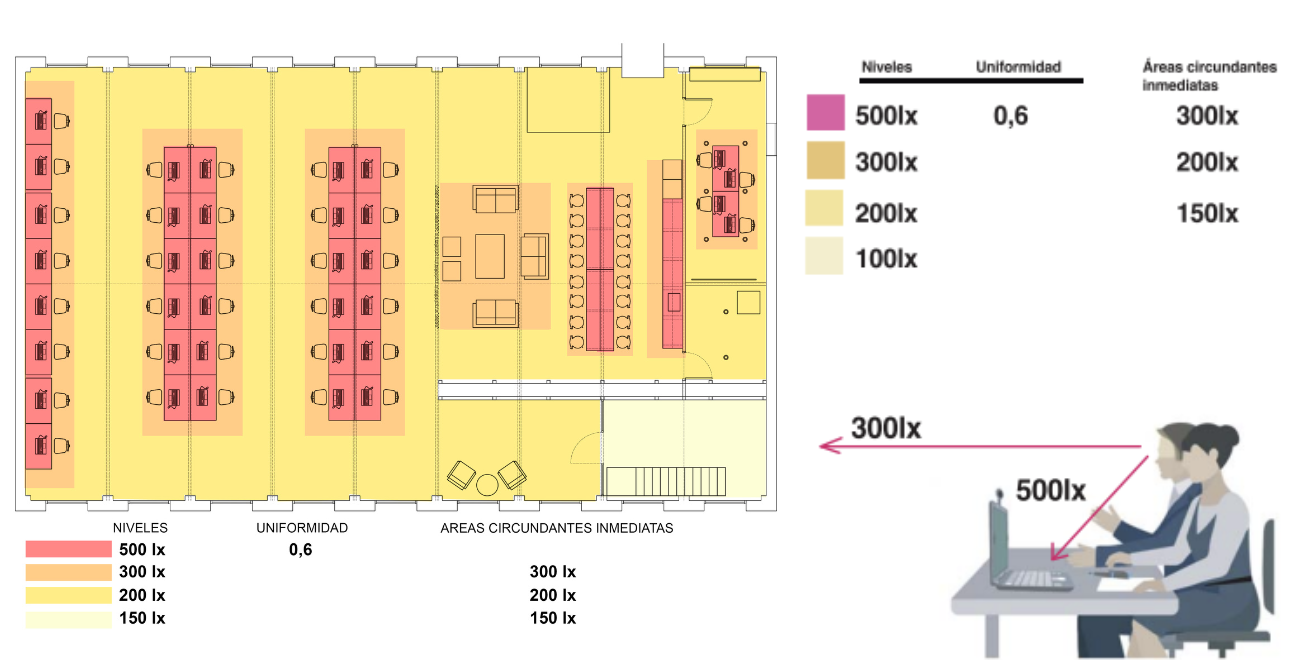
Office project: “Stupendastic”.
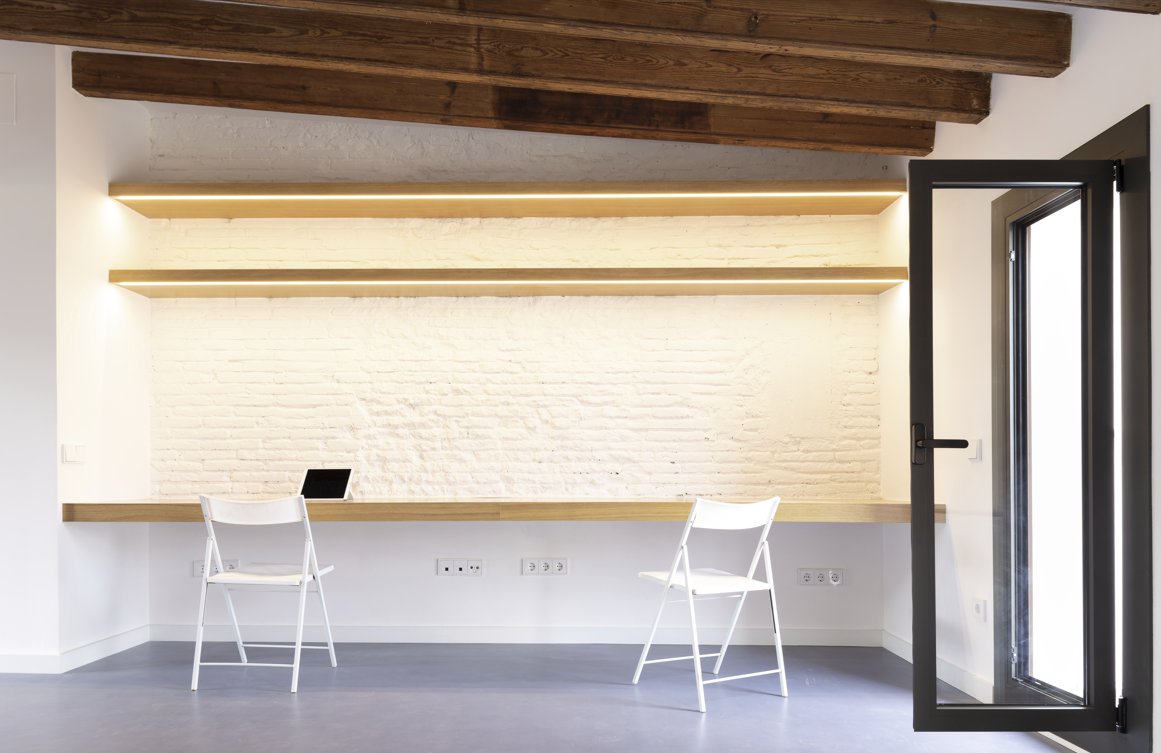
Between terraces and domes project. Direct light on the desk.
The effect achieved with dichroics recessed in false ceilings is much more homogeneous than that obtained with luminaires located at other heights. The different opening angles of the bulbs also generate different scenarios. These resources (among others) help to generate contrasts, to avoid exhausting homogeneous illuminations.
4. Combine direct and indirect lighting.
In almost every room of a house, we need intense light for precise actions (eating, knitting, cooking, studying, reading, applying make-up, shaving) and weaker light to accompany more relaxed actions (listening to music, sitting at table, circulating, getting up at night to soothe a baby). A lighting project must take into account the different verbs, to meet the needs of each moment. We should provide sufficient and quality light for actions that require precision and concentration, and calm and relaxed light to accompany actions where we are not interested in activating our metabolism (but rather the opposite).
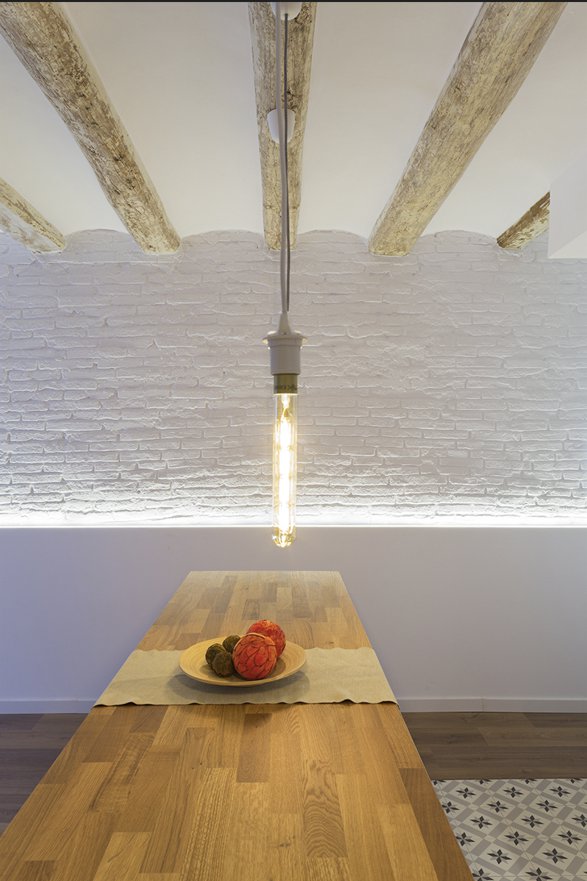
Hache House Project. Direct light on kitchen table. Indirect light behind the wall paneling, illuminating bare brick wall.
5. Give the possibility of dimming the lighting.
Another resource to attenuate intensity, is to use dimmers, which are electronic devices that allow to regulate the intensity or voltage.
In this way, our point of light, will have a variable intensity, which will help us to have the desired lighting environment at every moment, with the consequent saving of energy when we put the bulb with low light.
6. The color rendering index.
To finish with this small guide, let’s go with a more technical concept: the CRI, or color rendering index.
It is the characteristic of a bulb, which allows to show with greater or lesser fidelity, the values (colors) of an object, taking as reference the natural light. The regulations require a minimum CRI of 80, but this value is not recommended for areas where we spend many hours straining our eyes.
As a reference, a fluorescent lamp has a CRI of 60. And in the market there are many economic bulbs with a CRI lower than 80.

Color perception according to the CRI index of the bulb.
Some conclusions.
- Maximum use of natural light.
- Artificial light as reinforcement, replicating daylight: constantly changing in intensity, duration, angle, radiation, spectral distribution.
- Neutral whites (3,000K) as a base for most spaces.
- Enhance indirect lighting.
- Dimmable lighting to lower the intensity at night.
Good lighting concerns our visual health and depends both on the characteristics of the products and on the design strategies of the lighting project.
